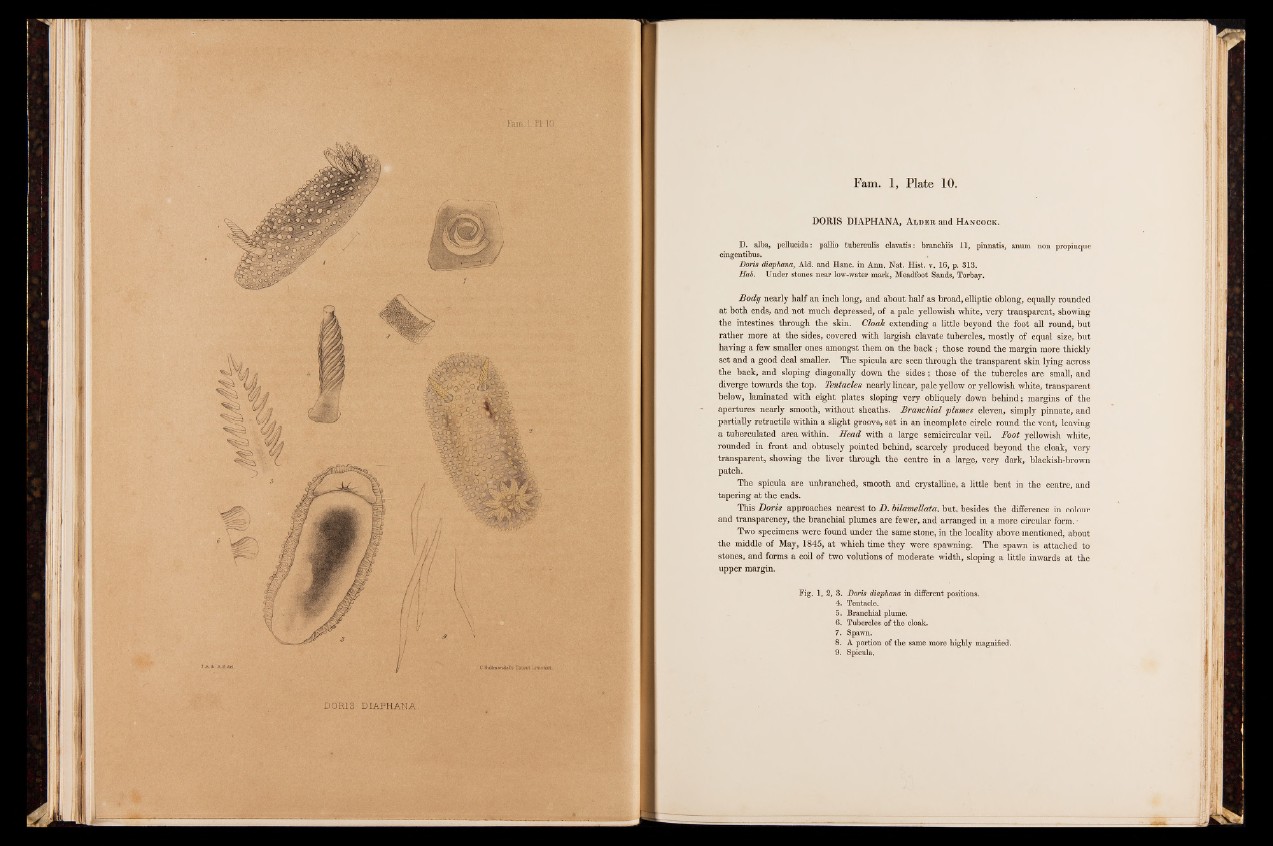
DORIS DIAPHANA, Alder and Hancock.
D. alba, pellucida: pallio tuberculis clavatis: branchiis 11, pinnatis, anum non propinque
cingentibus.
Doris diaphana, Aid. and Hanc. in Ann, Nat. Hist. v. 16, p. 313.
Hab. Under stones near low-water mark, Meadfoot Sands, Torbay.
Body nearly half an inch long, and about half as broad, elliptic oblong, equally rounded
at both ends, and not much depressed, of a pale yellowish white, very transparent, showing
the intestines through the skin. Cloak extending a little beyond the foot all round, but
rather more at the sides, covered with largish clavate tubercles, mostly of equal size, but
having a few smaller ones amongst them on the back; those round the margin more thickly
set and a good deal smaller. The spicula are seen through the transparent skin lying across
the back, and sloping diagonally down the sides; those of the tubercles are small, and
diverge towards the top. Tentacles nearly linear, pale yellow or yellowish white, transparent
below, laminated with eight plates sloping very obliquely down behind; margins of the
apertures nearly smooth, without sheaths. Branchial “plumes eleven, simply pinnate, and
partially retractile within a slight groove, set in an incomplete circle round the vent, leaving
a tuberculated area within. Head with a large semicircular veil. Foot yellowish white,
rounded in front and obtusely pointed behind, scarcely produced beyond the cloak, very
transparent, showing the liver through the centre in a large, very dark, blackish-brown
patch.
The spicula are unbranched, smooth and crystalline, a little bent in the centre, and
tapering at the ends.
This Doris approaches nearest to D. bilamellata, but, besides the difference in colour
and transparency, the branchial plumes are fewer, and arranged in a more circular form.
Two specimens were found under the same stone, in the locality above mentioned, about
the middle of May, 1845, at which time they were spawning. The spawn is attached to
stones, and forms a coil of two volutions of moderate width, sloping a little inwards at the
upper margin.
Fig. 1, 2, 3. Doris diaphana in different positions.
4. Tentacle.
5. Branchial plume.
6. Tubercles of the cloak.
7. Spawn.
8. A portion of the same more highly magnified.
9. Spicula.